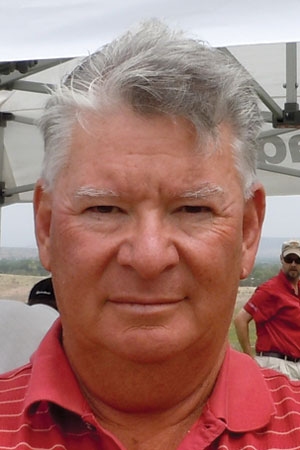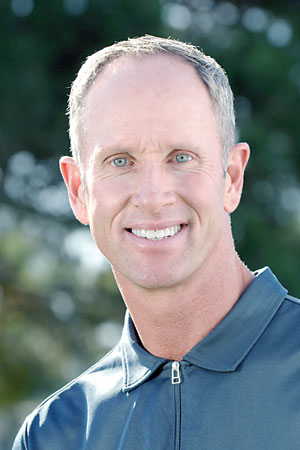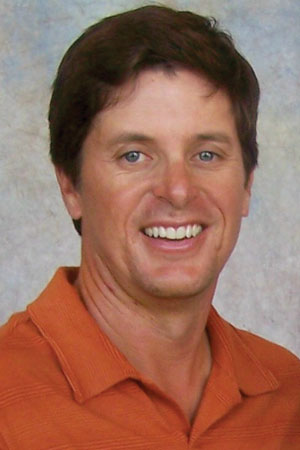 Alison Thietje
Alison Thietje
Owner, Mind-2-Motion
alisontggolf@gmail.com
www.mind-2-motion.com
I learned to play all sports from a wide base, so when I started to play golf it was “natural” for me have a wide stance since, like most golfers, I was taught that your stance should be just outside shoulder width.
Only problem is your clubs are designed to come through square based on rotational motion, not linear motion. If you transfer your weight, that is linear/lateral motion. The idea that a golfer can maintain “center” or “set up position” and not move off the ball while still transferring their weight is an oxymoron.
There is only one set of joints that support rotational forces from the torso and that’s the hip joints. When you rotate to the right, (clockwise), your weight should be posted up on the right leg/hip which means the leg is PLUMB, not at an angle. We call this neutral joint alignment. Same rule applies when rotating left. Having a plumb leg bone is optimal positioning for the hip joints to function at their best. Consequently, based on physics, a plumb leg is the result of a weight transfer. If your body stays centered and does not shift to one or the other leg, there is “no” weight shift. A golfer must make a decision one way or the other. You can either prioritize the weight transfer or prioritize staying centered and not moving off the ball. But, you can’t have both.
Let me explain. If your goal is to transfer your weight properly and your stance is too wide, you would need to shift your body too far off the ball in order to get the back leg plumb, followed by an even bigger shift to the lead leg to “post up” for a strong impact position. “Posting up” is a golf term which means the leg bone is plumb. This is critical for creating a powerful, stable hip turn that ideally brings the arms to impact position, not to mention, a fluid natural motion that promotes a healthy hip socket. If injury prevention is of any concern, I highly advocate a weight shift. So, what is the ideal width of stance?
Traditional instruction has taught us that a wider stance gives us more stability and your stance should be slightly wider than shoulder width. Unfortunately, the width of someone’s shoulders has absolutely nothing to do with stability for rotational motion. In fact, you can complicate or even interrupt a fluid turn by sacrificing a proper weight shift.
For many amateurs this leads to a reverse pivot on either the backswing or the downswing. Again, if injury prevention is a concern, I highly recommend a weight shift. This calls for a narrower stance, which is based on the width of your pelvis, not the shoulders.
When I speak of pelvis, I mean the width of the bone, not body mass. For example: If you are heavy set and you merely eyeball the width of your hips (or shoulders for that matter) you would be measuring hip width by body mass, not by bone structure and could easily make your stance 6” - 12” too wide. You ideally want to measure the width of the pelvis, add 4 inches and that’s your ideal stance. Many players are now playing with a much narrower stance, which helps them create a more fluid turn and in turn creates more consistency and power.
You may be asking, “Shouldn’t I widen my stance for longer clubs?” Based on physics, injury prevention and body mechanics? NO. Besides, what does the length of your club have to do with your bone structure? The club is changing, but you didn’t change. Bottom line, if you want to include a “weight shift” as part of your swing model and your stance is too wide, it’s never going to happen without adding a lot of lateral motion.
If you want your body to function at its best, tapping into the laws of rotation as it applies to body mechanics is a really good idea. Unfortunately, with all the conflicting swing theories, each golfer is being put into a position where they must begin to educate themselves and begin to make their own decisions on what swing model works best for them. Best thing to do is gather the facts (not opinions) and then give it a try! What do you have to loose?
To learn more facts about body mechanics and the width of your stance, visit us www.mind-2-motion.com and click on the FREE Golf Lessons link. Look for the video’s titled “Weight shift”. If you haven’t yet seen the videos of the Golf Flexibility Myth, be sure to watch those as well.
Happy golfing and see you next month.
For a free video on “how to test your golf ROM” go to www.Mind-2-Motion.com.
For over 25 years Alison Thietje has specialized in fitness and entrepreneurship. She has owned three successful golf fitness companies, one of which was the first personal training company to travel with the PGA Tour. She currently works as an independent contractor for The Traditions and The Reserves as a fitness and swing coach using the Mind2Motion Learning System. Alison launched Mind2Motion Golf website in March of 2012.
By Tom Velarde
I learned to play all sports from a wide base. When Istarted to play golf it was “natural” for me to adapt that stance, also. Early golf training for me was a national instructor who had 7 Basic Common Denominators. I was lead to believe that shoulder width was a standard. As a result, I adapted a stance that I now know was about two feet wider than I should have had. If your playing from a wide stance and are having hip problems, I would look there to make an adjustment.
When we get a little older this width hurts us even more as the joints in the ankles, knees and hips are all taking more strain into smaller areas. What I mean is when we stand at rest our body mass is distributed over joints equally, when we move outside of joint alignment the pressure is not evenly spread out.
Golf has confused the term stable with balanced. What does stable base really mean? Sometimes we hear the term “dynamic balance” which is used to describe balance as we are swinging. Why would the balance points move? If we are making effective and efficient turns, the balance points never move very much. Only when we move laterally does the balance become a problem. If you’re a player who uses a lot of lateral movement then you MUST adapt a wide stance in order not to fall down.
With M2M, when we ask you for a weight shift or post to the back leg, it means you’re placing your center line of the upper body (both upper and lower spine) slightly to the back leg side of the backswing. We look for a turn that is a true turn, not a lateral lean. Because your feet are not in the colossus of the road width, it’s so much easier to make the forward swing happen. When your width of stance is too wide, the only way to make a forward swing motion is by using your upper body once again to move laterally in an effort to gain speed. This is why a back ball position is necessary, as there is not enough time to allow for a swing to develop and the player now has to position the ball where the swing bottoms out.
We will talk extensively in coming issues about ball position and why it’s important, but for now we want to put you into a posture that promotes good swings.
I can, without reservation, tell you that since I have finally understood how the width of stance is, it is one of the major causes of swing faults. These faults are more fundamental than grip faults.
Tom Velarde is the Director of Golf at Black Mesa Golf Club in Espanola, New Mexico, just northwest of Santa Fe. For more information or to reach Tom, email
tvelarde@blackmesagolfclub.com.


 Alison Thietje
Alison Thietje








 Greg
Greg Mark
Mark John
John Scott
Scott Kim
Kim Jeff
Jeff Rob
Rob Alice and Danny
Alice and Danny